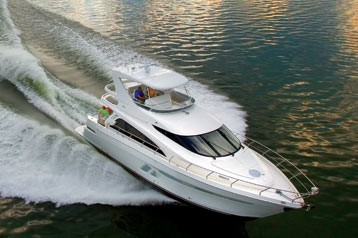- Alaskan Yachts
- Azimut Yachts
- Back Cove Yachts
- Beneteau Yachts
- Benetti Superyachts
- Bertram Yachts
- Boston Whaler
- Broward Yachts
- Buddy Davis Sportfish
- Burger Yachts
- Cabo Yachts
- Catamarans
- Carver Motoryachts
- Center Console
- Chris-Craft Yachts
- Cruisers Yachts
- DeFever Trawlers
- Dufour Sailboats
- Fairline Yachts
- Feadship Yachts
- Ferretti Yachts
- Formula Yachts
- Fountaine Pajot Cats
- Grady-White
- Grand Banks Trawlers
- Hargrave Yachts
- Hatteras Yachts
- Hinckley Picnic Boats
- Horizon Yachts
- Hydra-Sports
- Intrepid Boats
- Jarrett Bay Sportfish
- Jeanneau Yachts
- Kadey-Krogen Trawlers
- Lazzara Yachts
- Luhrs Sportfish
- Marlow Yachts
- Maritimo Yachts
- Marquis Yachts
- McKinna Motoryachts
- Meridian Yachts
- Midnight Express
- MJM Yachts
- Mochi Craft
- Neptunus Motoryachts
- Nordhavn Trawlers
- Nordic Tugs
- Ocean Alexander Yachts
- Offshore Yachts
- Outer Reef
- Oyster Sailing Yachts
- Pacific Mariner Yachts
- Palmer Johnson Yachts
- Pershing Yachts
55 Carver Marquis 2006
![]()

Source: Capt. Bill Pike, Power & Motoryacht Magazine
What made a believer of me was the thunk I heard when a sizable wave from someplace—maybe from one of the big, slab-sided Great Lakes ore carriers that constantly ply the cold, grayish waters of Wisconsin’s Green Bay—slammed the port bow like a sledgehammer.
I mean: Thunk!
“Jeeze,” I exclaimed, directing a speculative grin at Randy Peterson, who was sitting next to me in the copilot’s seat on the flying bridge, snuggly ensconced in a foul-weather coat—even by Wisconsin’s early-summer standards, temperatures were a tad frosty as we idled out of the ship channel, heading for open water.
Peterson grinned back, obviously proud to be working for Carver and its recent offshoot, Marquis Yachts, a Lexus-like division building the 65, 59, and our just-launched prototype, the 55 Marquis. Strictly speaking, Peterson’s a propulsion and systems-engineering manager, but he’s seriously dialed into other facets of boatbuilding at Carver and Marquis, including belt-and-suspenders construction techniques. “Solid, eh?” he said, making a fist.
Earlier, I’d toured Carver’s plant in nearby Pulaski to see how Marquis builds the 55. The construction process begins with a three-piece, pull-apart mold, an expensive, complex, and innovative piece of tooling that allows designers to run wild, taking curvaceousness to new levels, deepening style lines, and otherwise integrating shapes into the hull and superstructure that are way more dramatic than you’ll see on most other yachts, even those being built in Europe.
Lamination methods are extra-tough. The solid-glass bottom of the 55 is laid up by hand with Knytex substrates and a vinylester barrier coat to prevent osmotic penetration. Hull sides are cored with closed-cell foam below the waterline and end-grain balsa above. Balsa is also used to core the superstructure, which the Marquis craftsmen additionally stiffens with a matrix of stanchions and frames of tubular and bar-stock aluminum, all thoroughly glassed into the periphery of the interior.
Construction details are even tougher. A grid of massive fiberglass stringers and transversals is glassed—not just tabbed—into the bottom while the hull is still in the mold, a unibody approach that integrates, strengthens, and stiffens. Two thick fiberglass liners are secured with Plexus methacrylate adhesive atop the grid forward of the engine room and then glassed into the hull sides, all the way around—another unibody-type measure. And the theme continues with bulkheads, both forward and aft, bonded into the hull sides with the same all-the-way-around thoroughness and a hull-to-deck joint permanently secured with 3M 5200 polyurethane adhesive.
“Well, here we are—sea-trial city,” I said to Peterson, adjusting the collar of my own foul-weather coat as we approached the Bay proper. “What say we see if this baby runs as solid as she’s built?”
Boat Specification: 55 Carver Marquis 2006
Boat Type: Cruiser
Standard Power: 2/500-mhp Volvo Penta D9-500 diesel inboards
Optional Power: 2/575-mhp D9-575, 2/715-mhp D12-715, or 2/775-mhp D12-800 Volvo Penta diesel inboards
Length Overall (LOA): 57’4″
Beam: 16’0″
Draft: 3’9″
Weight: 62,000 lbs.
Fuel Capacity: 836 gal.
Water Capacity: 200 gal.
Standard Equipment: 2/12-hp Volvo Penta QL thrusters (bow and stern); LectraTab electric trim tabs; 3/Aqua-Journey helm seats; Bose entertainment w/ drop-down Sole flat-screen TV (saloon); Karedon countertops; Sharp Insight-Pro drawer-type microwave oven; EuroKera cooktop; Frigidaire refrigerator/ freezer; Handcraft innerspring mattresses w/pillowtops; 23-kW Kohler genset w/ Marine Muffler water-separating exhaust; 96,000-Btu Cruisair A/C; 2/C-Power ISO-Boost boost/transformers; Charles Industries IQ 2600 inverter, 20-amp battery charger (genset) and 60-amp battery charger; 2/Racor 900MA fuel-water separators; 2/Groco ARG-2500-S sea strainers; 4/Tides Marine dripless shaftlogs (rudders/propeller shafts); 6/8D batteries (4 engine/thruster and 2 house); Seaward Products 20-gal. water heater; Fireboy auto. fire-extinguishing system; 4/2,000-gph Rule auto. bilge pumps w/ Sensa Switch electronic switches
Test Engines: 2/775-mhp Volvo Penta D12-800 diesel inboards
Transmissions / Ratio: ZF325-1A/2.24:1
Props: 33×39 4-blade Nibral ZF New Foil
Steering: Teleflex Sea-Star Hydraulic
Controls: Volvo Penta electronic
Optional Equipment On Test Boat: Navigation electronics package; 3/Jensen flip-down TV/DVDs (master, VIP, and guest staterooms); hardtop; Voyager video monitoring system; Fisher & Paykel dishwasher; Broan trash compactor; Malber washer and dryer; General Hydraulic Solutions hydraulic swim/PWC platform